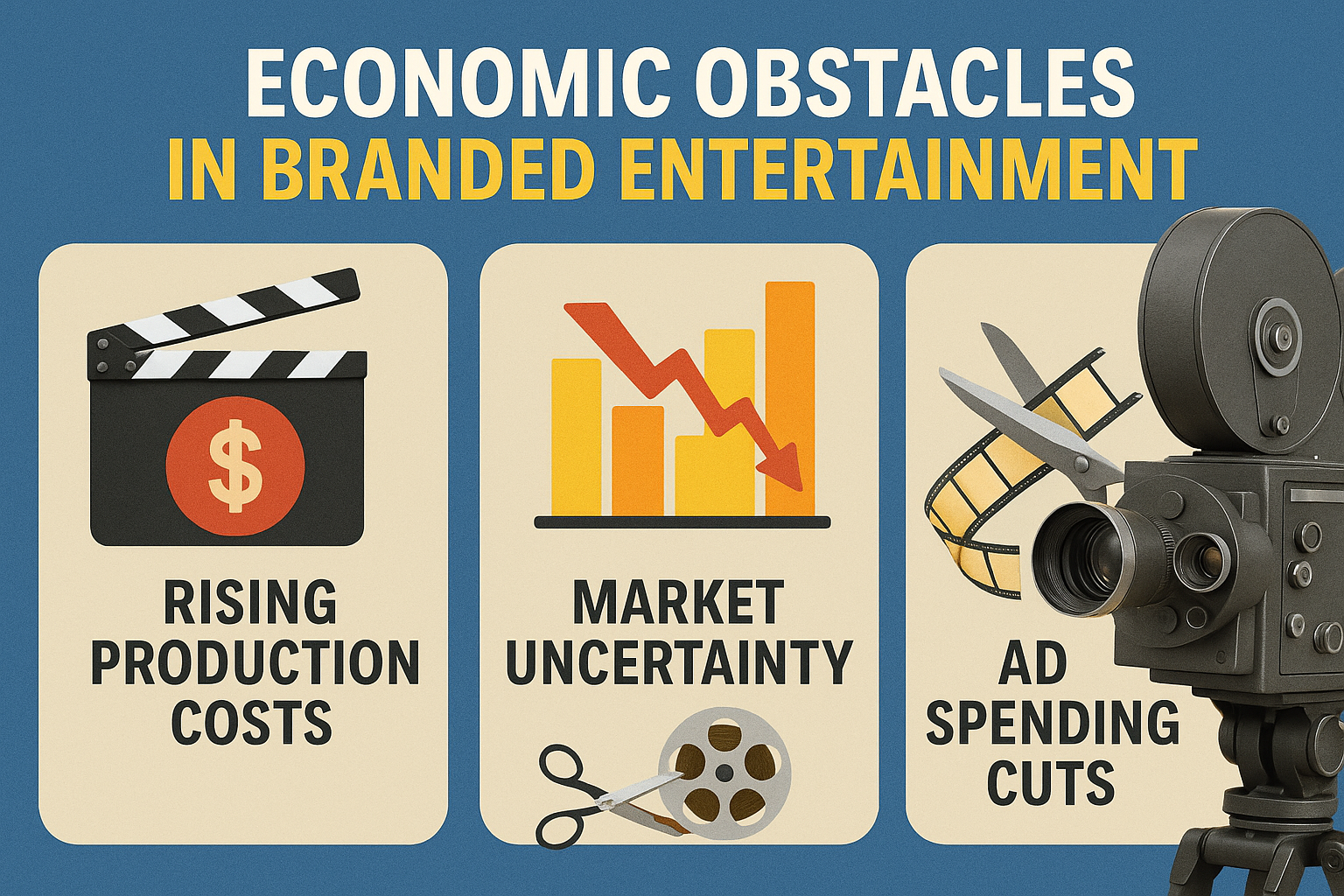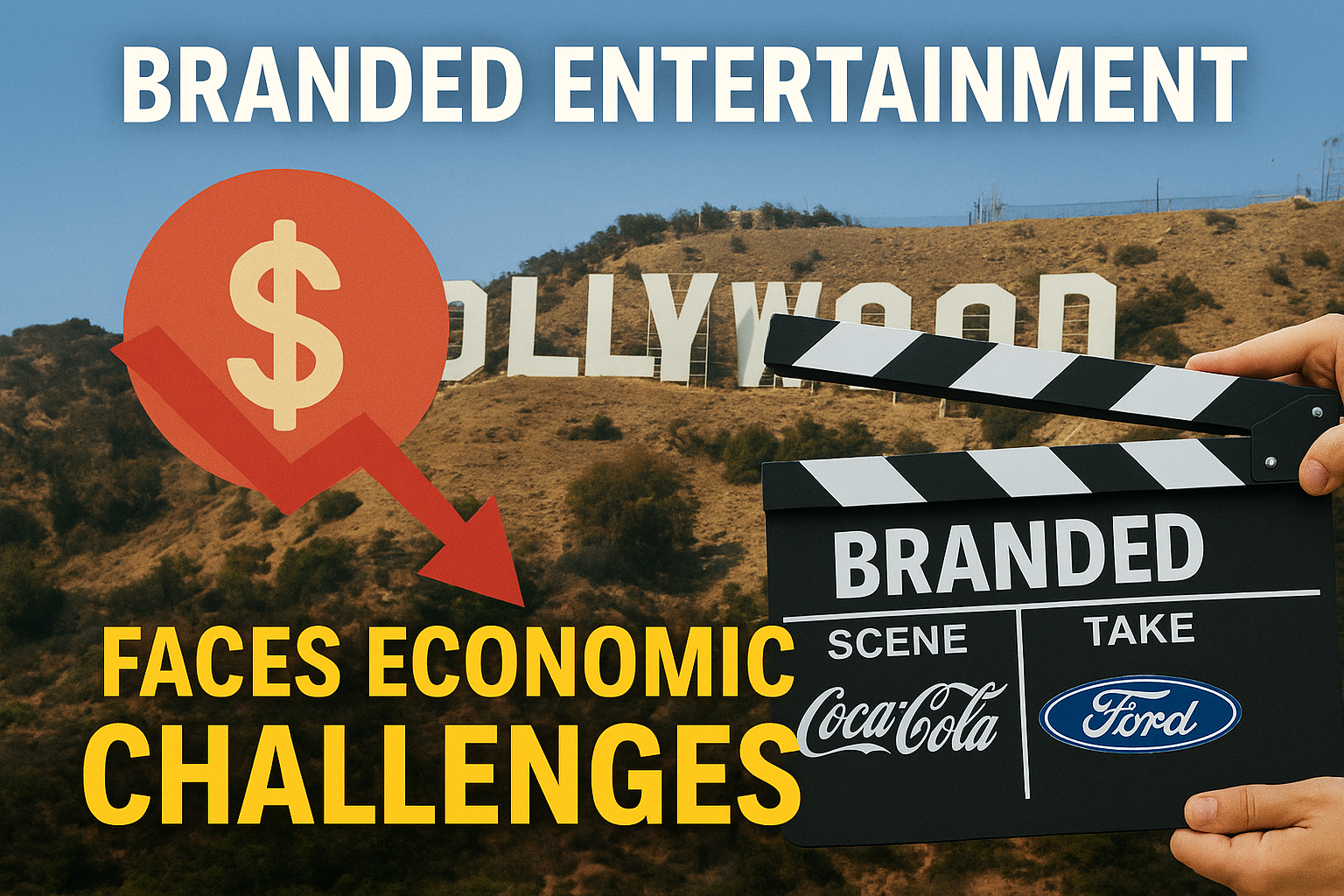Introduction
You know what’s kind of wild? Branded entertainment has proven challenging for Hollywood where people traditionally link the area to dazzling glamour and artistic freedom. The integration of Coca-Cola branding into blockbuster movies together with the use of fancy cars has become notably more difficult to achieve today. Why? Economic difficulties are spreading through the entertainment sector because they shake up the established patterns in modern entertainment production.
Let’s break it down. This blog examines recent changes in branded content together with current economic strain on Hollywood and adaptive methods for brand survival alongside entertainment industries.
A Quick Look Back: How Branded Entertainment Became the Norm
Branded content has never been an emerging phenomenon. It continues to exist since its original inception. Since its beginning before time branded entertainment evolved into an essential function of modern entertainment business revenue generation and consumer relationship development.
The movie E.T. showcased Reese’s Pieces as its essential character. Branded entertainment proved to be a strategic business arrangement which led to explosive candy sales. Since their inception movies and television shows together with streaming platforms adopted branded content as both an economic tool and a method to enhance storytelling authenticity.
The appeal is obvious. The partnership brings millions or billions of audience exposure to brands and allows entertainment producers to secure necessary funds for creating premium content. Win-win, right? Well, not so fast.
The Economic Challenges
So, what’s changed? This advantageous co-operation between brands and producers now creates unfavorable partnerships among them.
1. Global Economic Uncertainty
The unstable global economy requires brands to conserve their corporate funding. The Reuters report disclosed that a proposed complete tariff on foreign film imports could lead to substantial cost increases for Hollywood movie production. Branded entertainment agreements become riskier because of the new production costs which develop during the transactions.
2. Advertising Budgets Are Shifting
3. Audiences Are Wising Up
What Experts Are Saying
Focus on Authenticity: The acceptance of genuine storytelling stands as an absolute requirement in modern narrative marketing practices. Brands together with creators must develop common principles about shared aims and beliefs rather than monetary benefits alone.
The statement from Lisa Johnson, a Hollywood marketing consultant, stuck with me: “The days of flashy logos and obvious placements are over. Viewers want to feel like the brand belongs in the story, not that it’s being shoved in their face.
What Does This Mean for Entertainment Brands?
1. Story First, Brand Second
Your narrative must exist to support a product rather than carrying it to market. Products should function in service of the story instead of being used as an excuse for a product advertisement. Within Stranger Things’ retro Coke promotional advertisement it perfected both product marketing and retro setting tone for the series.
2. Diversify Distribution
You must avoid depending only on standard mass media channels. Branded content finds exceptional opportunities through the combination of streaming services and YouTube videos together with digital gaming platforms.
3. Adapt to Budgets
Both businesses must find innovative approaches due to economic difficulties. Reconsider placing ads in smaller platforms together with co-branded advertising projects while also looking into local income opportunities for spending reduction.

Hollywood and Brand Collaborations Face What Future Developments
So, where do we go from here? The upcoming future displays enough promising elements while remaining substantial unknown areas.
The Good News
Streaming services keep expanding as platforms which enable brand integration within content delivery. The combination of artificial intelligence analytics systems helps both producers and advertisers track return on investment to confirm their investment success.
The Challenges
Production prices remain high alongside consumer expectations that show no sign of decreasing soon. Businesses dealing with brands and entertainment enterprises must create new strategies continuously to maintain competitiveness.
Real-Life Examples: The Hits and Misses of Branded Content
The perfect execution of branded entertainment does occur occasionally. Other times, it’s… cringey. Here are some recent examples:
The Success Story: Apple in Ted Lasso
Branded content has achieved its highest level of success through Apple’s Ted Lasso project. The television show readily incorporates every aspect of the Apple brand including its hardware products and Apple TV+ streaming platform. The integration backfires because it appears authentic to the overall storyline. The perfect alignment remains the specific goal among the content creators.
The Misstep: Heineken in No Time to Die
Some cinema watchers expressed disapproval regarding the explicit Heineken positioning in No Time to Die. The Heineken product placement in the movie stood out too prominently for a James Bond series that relies on elegant presentation.
Conclusion
To prevail among current market conditions Hollywood and brands need to prioritize intelligent strategies instead of traditional extended efforts. Companies should develop partnerships that enhance the story value along with audience experience.
And for you, the viewer? During your next TV viewing appreciate how carefully planned collaborations shape the integration of products into your television entertainment. The simple Coke container or fancy automobile represents negotiations alongside creative choices and management of economic obstacles.

